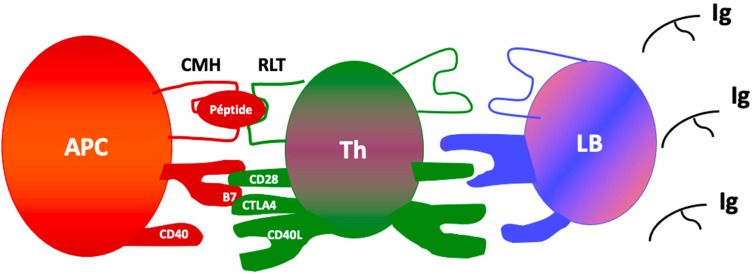Figure 1.
Mechanism of immune response to FVIII. FVIII is processed by the antigen-presenting cell (APC). Its function is to recognize and internalize it, giving rise to an endosome inside, which after merging with a lysosome leads to digestion of FVIII into peptide fragments that can bind to class II molecules of the major histocompatibility system. In case it is not assembled, the class II molecule will be degraded; otherwise, the complex will be transported to the surface of the APC, which presents it to the T cell receptor (TCR). The activation of T lymphocytes requires this union and the signals resulting from the interaction between various molecules such as CD28/B7 (pro-activation) or CTLA4/B7 (anti-activation). After this, there is an expansion of clone responsible for presenting FVIII to B lymphocytes. B lymphocytes (BL) are responsible for the production of specific antibodies (immunoglobulins [Ig]).

